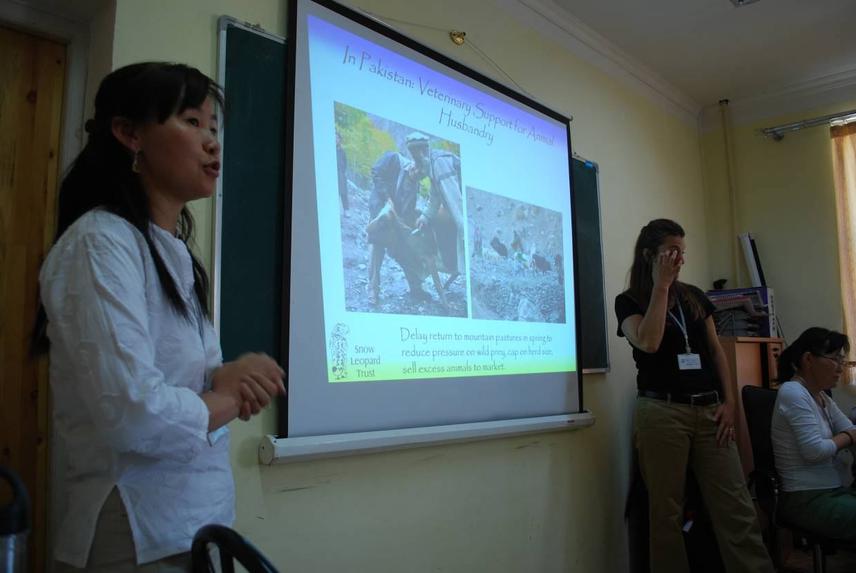Bayarjargal Agvaantseren
The aim of this project is to bring together herders from the far reaches of snow leopard range in Mongolia so that we can unify their efforts as they help to manage the largest snow leopard conservation program in the country.

Presentation on introduction of snow leopard conservation in other countries.
Mongolia has some of the richest snow leopard habitat in Asia and may be home to nearly 1,000 individual animals, the second largest snow leopard population in the world. Rural herding families in Mongolia earned less than $1 (US) per day and encounter problems with snow leopards killing livestock, creating conflict between herders and predators.
In 1998, a program called Snow Leopard Enterprises (SLE) was created to give rural herders a means for increasing their income through handicraft production. To take part in this program, herders must refrain from killing snow leopards or their key prey; they receive a year-end bonus if no poaching occurs in their community. Today, over 400 herders participate in SLE throughout all seven provinces where snow leopards are found in Mongolia.
Snow leopard range is Mongolia is so vast, rugged and remote that the program largely relies on the voluntary assistance of veteran SLE participants to coordinate its day-to-day operations and maintain SLE’s link to snow leopard conservation. However, these coordinators have never all met at once and, as a result, have not been able to combine their efforts to have the greatest and most effective impact for the species. With our Rufford Small Grant, we will hold a 5-day training that will bring them together for the first time to:
1) Improve the connections between SLE and snow leopard conservation;
2) Synchronize product quality so that all SLE communities achieve similar outcomes and therefore have equally strong incentives for protecting snow leopards;
3) Meet with national park rangers/directors/local environmental inspectors so that SLE coordinators can better understand their services, and so that both parties can discuss opportunities for coordinated snow leopard conservation.
Information from the training will be compiled into a workbook and disseminated to the coordinators so that they have an easy reference guide for continuing their work when they return to their respective provinces.